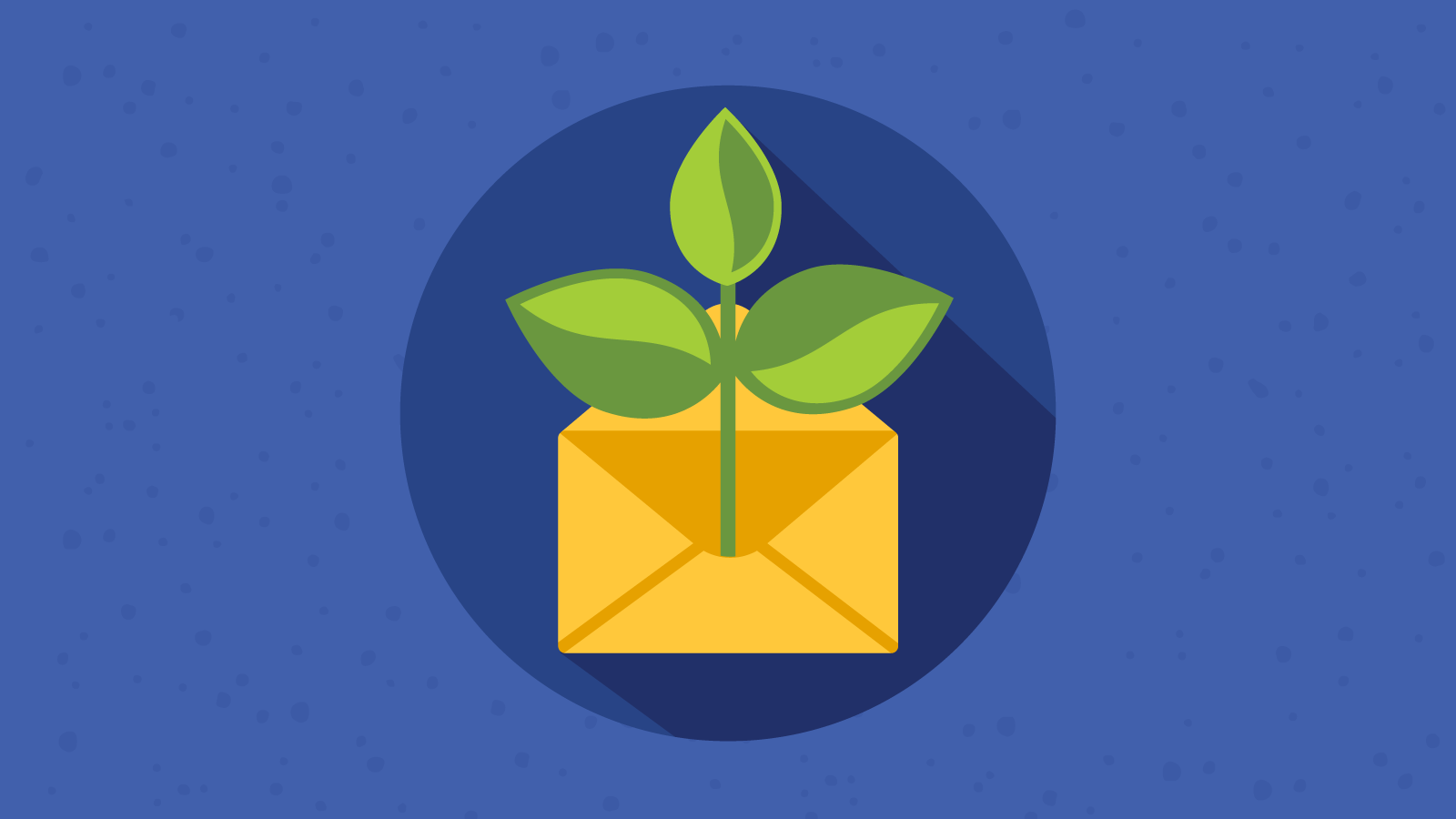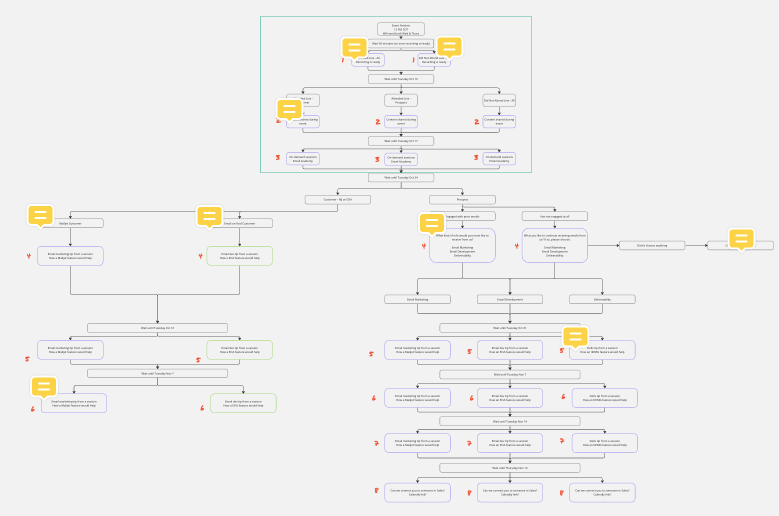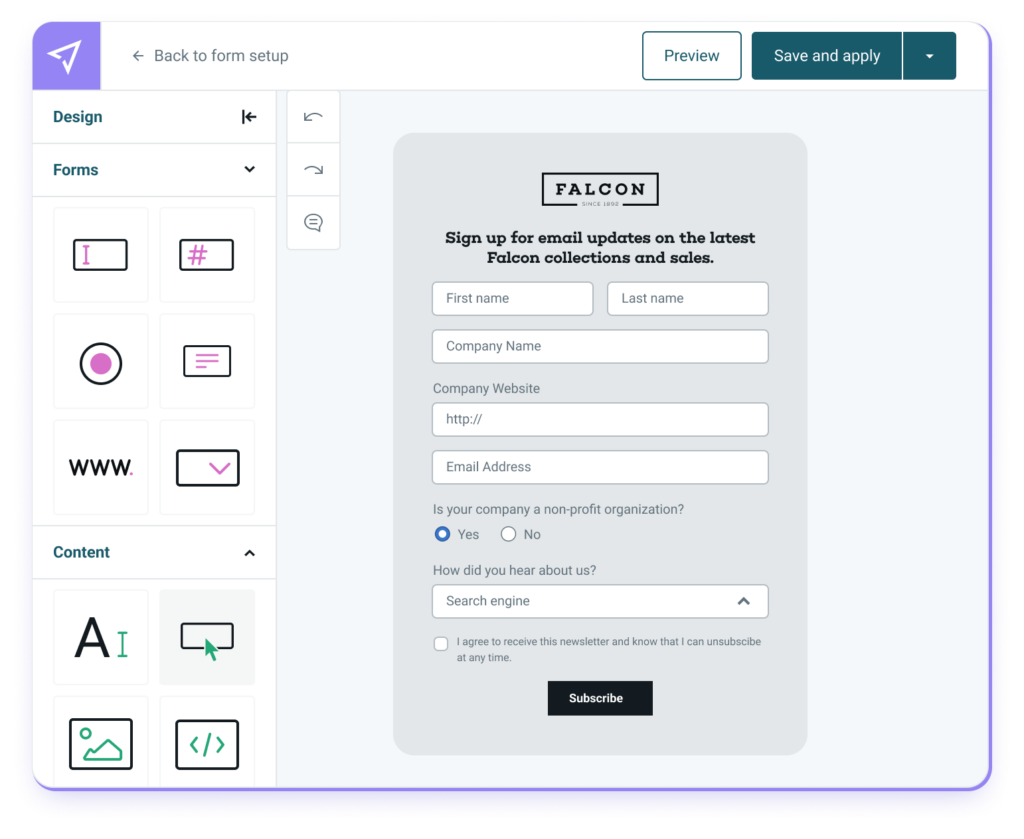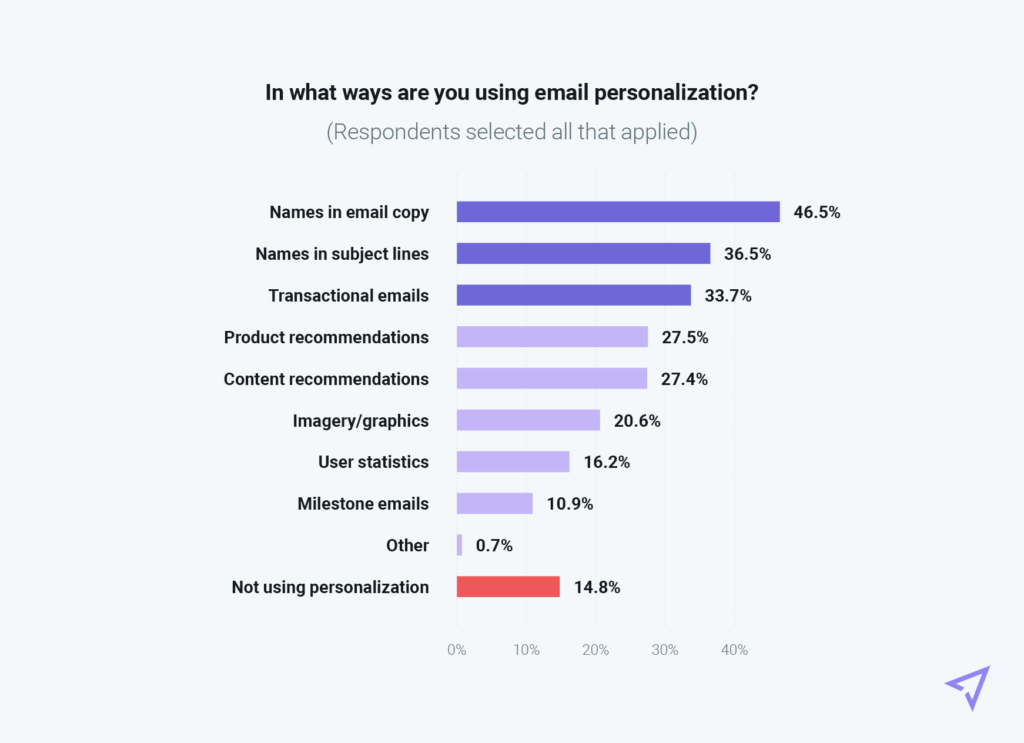Email Marketing
The Strategy for an Effective Email Nurture Campaign

Email Marketing

Capture leads, persuade them to purchase, and convert them into customers. That’s your job as a marketer. So, the idea of “nurturing” your new leads may sound like the wrong choice of words.
After all, to nurture means to care, encourage, and protect. It’s about helping someone or something grow and thrive. Nurturing is what moms do – not marketers. The only things we’re trying to grow around here are list size and revenue. Right?
What if you could accomplish all that while being helpful and informative at the same time?
An email nurture campaign is an effective way to offer guidance and show that your brand cares. Email nurture campaigns can also guide prospective customers along a buyer’s journey that leads to a sale. If it turns out to be a good fit, there will be a happy ending for everyone involved.
Your leads discover answers to their problems and get something they need or want. You get a highly engaged, satisfied customer.
Email nurturing involves delivering a series of targeted messages that are designed to establish trust and build a relationship between a lead and your brand. It is a pivotal part of an advanced email marketing strategy.
In an effective email nurture sequence, you’ll send specific messages to prospects at just the right time. It’s almost like you’re inside their heads. You deliver the information they’re trying to find exactly when they need it. Then you point them in the right direction when it’s time to take the next step.
Email nurturing takes time. It’s a little bit like dating your prospects through the inbox, which is how Seth Godin describes it in Permission Marketing.
An old-school “email blast” (sorry for the trigger word) to your entire list is like walking into a party and yelling, “Hey, anyone want to date me? I’m available for a limited time! Click here now!”
Email nurturing takes things slowly. It gives your leads time to get to know you. It even gives you a chance to seduce them a little bit. You sassy, flirty, email marketer you!
A similar approach to email nurturing is the drip campaign. These two tactics have the same basic strategy: deliver a series of emails that turn leads into customers, browsers into buyers.
The biggest difference is in the way email nurture campaigns and drip campaigns use marketing automation. With drip campaigns, messages are sent out over a defined duration. For example, a new email from a drip campaign may show up once a week or every couple of days. The email sequence automatically “drips out” over time.
With an email nurture campaign, the marketing automation tends to be more complex and targeted. A nurture sequence is often based on a lead’s behaviors. Certain actions automatically trigger the next email in the sequence. For example, signing up for an email newsletter triggers a welcome email that links to a video. If a new lead watches the video, it triggers a follow up email.
Other common behaviors that could trigger messages in an email nurture sequence include:
Lead scoring is another tactic that may be used to determine how prospects are nurtured or when it’s the right time for the sales team to reach out. Marketing automation tools assign values to leads based on their digital behaviors. Lead scoring helps identify when a marketing qualified lead (MQL) becomes a sales qualified lead (SQL).
The actions your leads and prospects do not take can also trigger emails. That could include leaving items in their cart without purchasing, failure to open previous emails, or forgetting to take advantage of a free trial before it ends. It’s all about getting the timing right. For example, if a lead fills out a form for a piece of gated content, you may not want to start the nurture sequence until they’ve actually clicked to download that content.
Building an advanced email nurture sequence is a little like mapping out a Choose Your Own Adventure story. You’ll need to use marketing technology such as a customer relationship management (CRM) solution to create workflows that automate the email nurturing process.
Here’s a look at how the Sinch Email team built out a nurture series as a follow-up for Email Camp attendees. Not a very simple workflow, is it?

Before launching an email nurture campaign, you’ve got to know who you’re nurturing, what they need, and where you’re guiding them. This requires an understanding of your target audience, the customer journey, the sales cycle, and more.
Let’s take a closer look at what you’ll need for the foundation of an email nurturing strategy.
Buyer personas are imaginary snapshots that illustrate your ideal customers. While personas can include demographics like age, gender, income, and education, it’s psychographics that matter most. These are the attitudes, beliefs, and fears your ideal customers hold.
Psychographics help you identify a key part of your email nurture strategy – the pain point.
What’s the big problem the prospect is trying to solve? What frustrates, confuses, or scares them? That’s the pain point, and your email nurture sequence should center around that idea.
Of course, different people have different problems. That’s why you’ll probably need to consider multiple buyer personas. And, because those personas have different goals and motivations, each of them may need a unique nurture sequence too.
Now that you know who you’re nurturing, you need to consider where they are in the process of making a purchase. There are certain steps most of us follow when making purchase decisions:
We often call these steps the buyer’s journey or customer journey. There are similar steps in a marketing or sales funnel. The difference is that one puts the focus on the potential customer’s point of view while the other takes on the perspective of those trying to make the sale.
It’s perfectly fine (and pretty smart) to consider the sales cycle when you’re coming up with a plan for an email nurture sequence. Knowing how sales may interact with leads is important and so is understanding how long the buying cycle takes for what you’re offering.
But what you never want to forget is who the email nurture campaign is for…
Let’s go back to the dating analogy from earlier. If your nurture campaign is full of emails about your brand, you’re missing the point. Sure, you could send emails that tell the company’s story, showcase your awards, and brag about everything you’re good at. But imagine being on a date with that.
A date who spends the entire night talking about themselves probably won’t get a second shot. On the other hand, a date who shows genuine interest in the other person has got a much better chance.
It’s easy to get sidetracked, but it’s Rule #1 of customer-centric marketing: They are the hero not your brand. It’s their problem, their future, their story. So, make it about them.
As you start to choose topics and content for an email nurture campaign, be sure to keep that idea top of mind. To learn more about making your customer the hero, check out the exclusive ebook, “The omnichannel hero’s journey” from Sinch Mailjet.
The number of emails in a nurture sequence and what you put into lead nurturing emails will depend on the situation. That includes the target audience, the way someone became a lead, the length of the sales cycle, and what you’re ultimately offering.
If you want to nurture leads, you’ll need to collect them first. This is usually done through various forms on your website, like the example below from Sinch Mailjet’s Form Builder.

These forms could be to get a free trial, sign up for a newsletter, register for an event, download a PDF, or access a library of content. The incentive to fill out the form is typically called a “lead magnet.”
Lead capture often takes place near the end of the Awareness stage in a customer journey. They’ve got a problem, and they’re starting to search for solutions. They’re hoping your lead magnet provides some answers.
Both the lead magnet and the form itself will inform your email nurture campaign strategy. The lead magnet provides clues about what the prospect is interested in, what they’re trying to achieve, and what their pain point is. The fields in an online form can tell you even more about the best way to nurture a new lead.
We should note that overwhelming website visitors with a ton of nosy questions could reduce form conversions. So, if you don’t need to know, don’t make it a form field. For example, at this point in the process, you may not need a phone number. However, you do want to ask enough to deliver relevant, helpful information.
You can use the data you get from those form fields for segmentation, which allows you to place different leads into the ideal nurture sequence. A common B2B lead nurturing example is using the “Job Title” field to segment prospects and place them in the right nurture track. This works well because, in many cases, B2B personas are based around job roles.
If your company is both B2B and B2C, that’s an important consideration too. Consumers would be pretty confused by B2B emails.
A huge variety of other factors can be used for lead segmentation and nurturing. The point is, you want to deliver meaningful and valuable content to the right people. That may mean segmenting by location if weather or culture are relevant. It could mean segmenting by gender if you’re selling different things to women and men.
Here are some other ways to consider email segmentation for nurture campaigns:
| B2B Segmentation | B2C Segmentation |
| Industry Annual revenue Job title Employee headcount Purchase intent | Product preferences Family status Age group Interests Geography |
If you’re able to identify the stage of the customer journey that a lead is navigating, that also informs segmentation strategy. At the very least, it suggests where nurturing should start. Someone who just learned about you needs different information than a lead who is already comparing you with competitors.
What do they need to know next? That’s the question you should ask at the end of each stage in an email nurture sequence. No matter who you’re marketing to, relevant content that answers key questions is one of the most powerful tools in your email nurture campaign strategy.
This is where the sales, customer service, and marketing teams need to work together. Sales reps may have insights into the kinds of questions prospects are asking before they’re ready to purchase. Content marketing specialists can recommend the best pieces for informing and educating new leads.
While you may think of lead nurturing as a B2B tactic, consumers need the same sort of guidance, especially for major purchases. Research from Conductor suggests that educated consumers are 131% more likely to buy. We’re not talking about college degrees here. An “educated consumer” is one who has all the information they need to make their choice.
It’s also likely that there are questions your leads and prospects don’t know to ask. These are the things they never thought to consider. Experts in your organization may have ideas, opinions, and insights that are valuable to potential customers. Likewise, original research and analysis can provide the hard numbers potential customers need to justify a purchase.
This is where you can add thought leadership marketing into your email nurturing. Showcasing thought leaders is an effective way to build trust and establish topical authority. Leads will associate your brand with being innovative. They’ll be grateful you shared cutting-edge ideas and fresh statistics with them because these things help them look like the smartest person in the room.
Since thought leaders are real people in your organization, making them part of an email nurture campaign helps your brand establish a human-to-human relationship with new leads.
Another way to make lead nurturing feel more personal is to personalize email content. You’ve already created a series of emails designed around specific personas and pain points. Some basic personalization is the finishing touch you need to demonstrate that your brand sees the lead as a real person – not just a potential sale.
Sinch Mailjet’s Inbox Insights report found that names in subject lines and body copy are the most popular ways to personalize emails. However, the same study also found that marketers who used more advanced personalization tactics were more likely to report having success.

One way to do get more advanced is to continue the personalized experience in the inbox on your website. This is an excellent opportunity to connect emails and landing pages. Dynamic content in emails and on your website can be generated based on a contact’s data, preferences, or behaviors.
As a lead gets near the end of an email nurture campaign, they should also be getting closer to the Purchase stage of their customer journey. First, however, they may need help weighing their options and comparing you to competitors.
The Evaluation stage of a path to purchase is the perfect time to deliver case studies and testimonials to a lead’s inbox. These provide social proof that other people and business trust your brand. It shows that you were able to solve their problems and ease their pain points. Most of all, these touchpoints can show how you make your customers the hero, helping them achieve success.
Many marketers hesitate to provide an honest comparison of their brand versus the competition. We love to put together landing pages with green checkmarks and red Xs, leaving out anything that makes us look less than awesome. That might be a mistake. If you want things to work out, you should make sure that the leads you’ve been nurturing truly are the right fit for what you’re offering them.
Obviously, price is on the top of every lead’s mind as they near the end of a buyer’s journey. Be as specific and transparent about pricing as you can at this point. Tools such as pricing calculators to help people estimate total costs could be extremely useful in the decision-making process.
It goes without saying that not every lead will become a paying customer during your email nurture campaign. However, at some point, you’ve got to make the ask and hope for the best.
If you’ve made the potential customer the hero of your nurture campaign, the last email in the series should invite them to be that hero. Think of your call to action more like a call to adventure or an opportunity to grab hold of the very thing your prospects have been seeking from the beginning.
Get creative with CTA copy. A “Buy Now” button isn’t going to hit the right tone. Try something like:
You may want to create a sense of urgency or fear of missing out at the end of the lead nurturing campaign. In some cases, it may be appropriate to offer a discount or coupon code as an incentive.
Another good move for the end of a nurture series is offering prospects who still have questions the chance to connect with someone in your company who has answers.
For those who don’t convert, there may still be hope. Maybe they’re not ready yet, or they could end up having an unsatisfactory experience with a competitor. Stay in touch with these contacts by moving them to a different email list. Send them your email newsletter, product updates, and other information. One of these days, they just might change their minds.
One last tip… If a lead does become a customer before the end of the nurture sequence, make sure your workflow removes them from the automation after the purchase. You don’t want to ask for the sale if you already got it. That’s annoying.
You can have the best strategy of all time, but if your marketing campaign shows up in inboxes looking like a hot mess, it’s not going to be very effective.
Don’t let roadblocks like inconsistent rendering, accessibility issues, or a bad mobile experience keep your awesome emails from nurturing the heck out of your leads. Sinch Email on Acid is a quality assurance platform that makes sure your campaigns are ready for the inbox before you hit send.
See previews from more than 100 of the most popular email clients and live devices to find out how your nurture emails will look when opened. Create your own pre-send email marketing checklist for everything from color contrast and inbox display to UTM codes and deliverability checks.
With unlimited email testing, you can keep perfecting your work until you are 100% confident it’s ready.